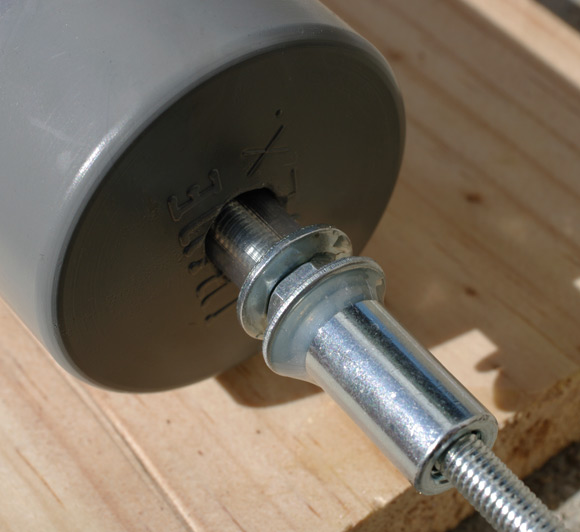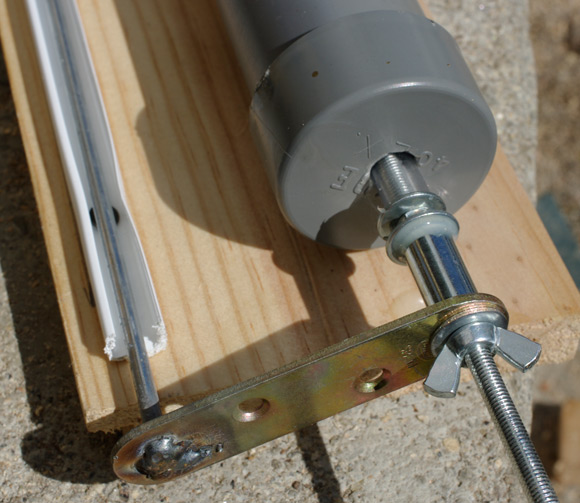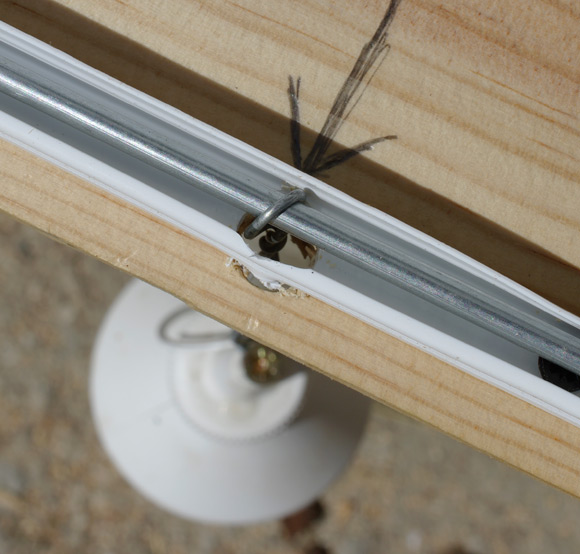This article is more than 1 year old
Vulture 1 Mk 2 release mech prepped for testing
Coming soon: Hypobaric chamber - The Revisiting
Of course, you're wondering exactly how, as the oxygen tube inside the outer casing expands, it will release the Vulture 1.
First up, we tidied up the end components of the plunger rod, with a couple of washers, a nut and a steel spacer, all epoxied into place. This snap shows those components at their start position relative to the PVC tube end cap, with the oxygen tube fully compressed:

Next up, we welded a steel "release rod" to a bracket which is fitted tightly onto the plunger rod with a wing nut. The wing nut allows the release rod to be removed, which is vital for the pre-flight suspension of Vulture 1. Note the plastic guide channel for the release rod, which is a bit of off-the-shelf electrical box conduit:

At the longitudinal midpoint of the release mechanism, inside the plastic guide conduit, is the spot at which Vulture 1 will hang from the release rod by a wire passing through the floor of the main payload box. The wire is simply looped loosely around the rod, and when the end of the rod passes through the loop at the required expansion of the oxygen tube, the aircraft will drop away (yes, we have calculated the expansion and correct rod travel distance, thanks...).

